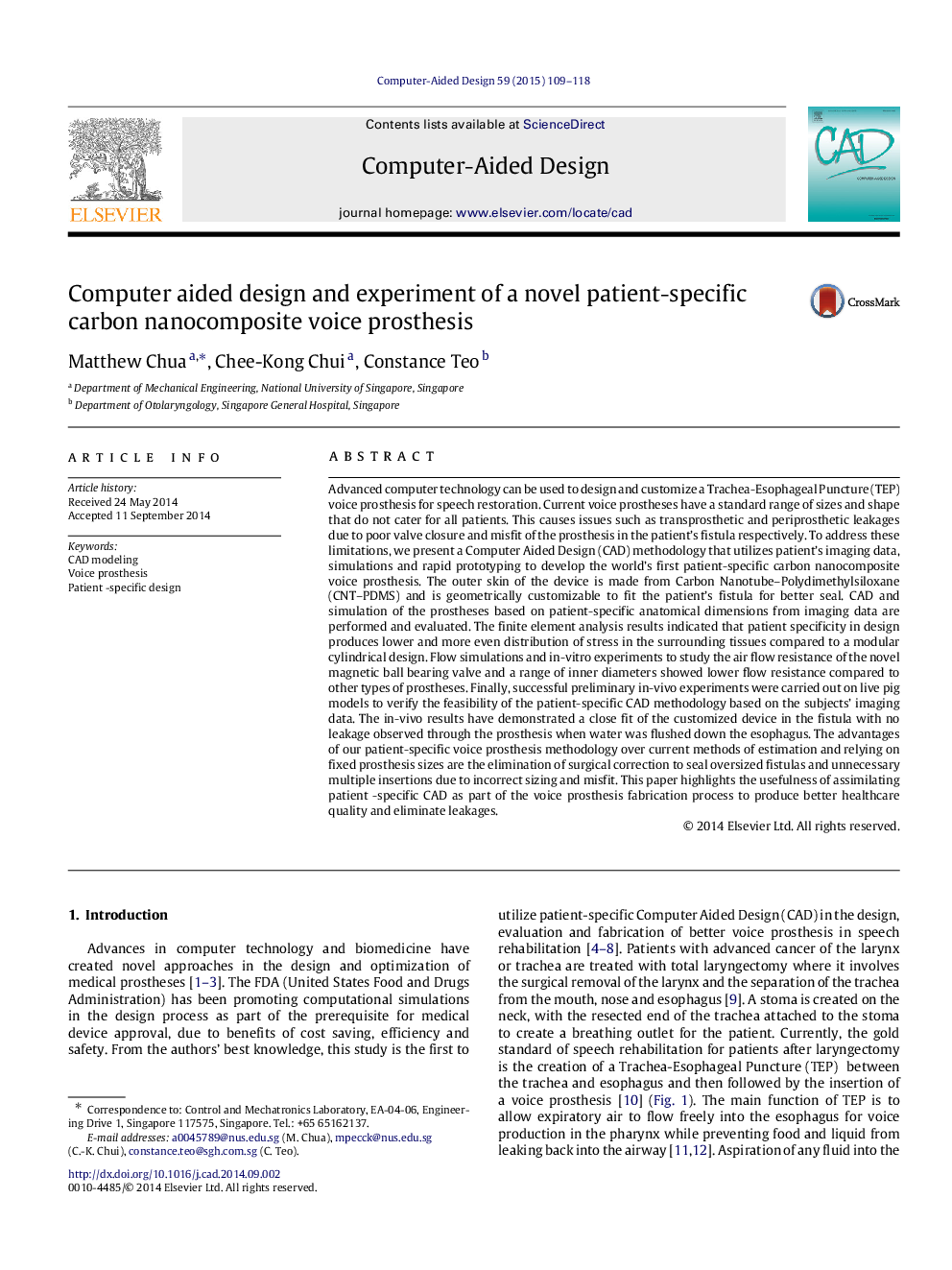| کد مقاله | کد نشریه | سال انتشار | مقاله انگلیسی | نسخه تمام متن |
|---|---|---|---|---|
| 6876525 | 691250 | 2015 | 10 صفحه PDF | دانلود رایگان |
عنوان انگلیسی مقاله ISI
Computer aided design and experiment of a novel patient-specific carbon nanocomposite voice prosthesis
ترجمه فارسی عنوان
طراحی و آزمایش کامپیوتری یک پروتز نانو کامپوزیت کربن جدید مبتنی بر بیمار
دانلود مقاله + سفارش ترجمه
دانلود مقاله ISI انگلیسی
رایگان برای ایرانیان
کلمات کلیدی
موضوعات مرتبط
مهندسی و علوم پایه
مهندسی کامپیوتر
گرافیک کامپیوتری و طراحی به کمک کامپیوتر
چکیده انگلیسی
Advanced computer technology can be used to design and customize a Trachea-Esophageal Puncture (TEP) voice prosthesis for speech restoration. Current voice prostheses have a standard range of sizes and shape that do not cater for all patients. This causes issues such as transprosthetic and periprosthetic leakages due to poor valve closure and misfit of the prosthesis in the patient's fistula respectively. To address these limitations, we present a Computer Aided Design (CAD) methodology that utilizes patient's imaging data, simulations and rapid prototyping to develop the world's first patient-specific carbon nanocomposite voice prosthesis. The outer skin of the device is made from Carbon Nanotube-Polydimethylsiloxane (CNT-PDMS) and is geometrically customizable to fit the patient's fistula for better seal. CAD and simulation of the prostheses based on patient-specific anatomical dimensions from imaging data are performed and evaluated. The finite element analysis results indicated that patient specificity in design produces lower and more even distribution of stress in the surrounding tissues compared to a modular cylindrical design. Flow simulations and in-vitro experiments to study the air flow resistance of the novel magnetic ball bearing valve and a range of inner diameters showed lower flow resistance compared to other types of prostheses. Finally, successful preliminary in-vivo experiments were carried out on live pig models to verify the feasibility of the patient-specific CAD methodology based on the subjects' imaging data. The in-vivo results have demonstrated a close fit of the customized device in the fistula with no leakage observed through the prosthesis when water was flushed down the esophagus. The advantages of our patient-specific voice prosthesis methodology over current methods of estimation and relying on fixed prosthesis sizes are the elimination of surgical correction to seal oversized fistulas and unnecessary multiple insertions due to incorrect sizing and misfit. This paper highlights the usefulness of assimilating patient -specific CAD as part of the voice prosthesis fabrication process to produce better healthcare quality and eliminate leakages.
ناشر
Database: Elsevier - ScienceDirect (ساینس دایرکت)
Journal: Computer-Aided Design - Volume 59, February 2015, Pages 109-118
Journal: Computer-Aided Design - Volume 59, February 2015, Pages 109-118
نویسندگان
Matthew Chua, Chee-Kong Chui, Constance Teo,
